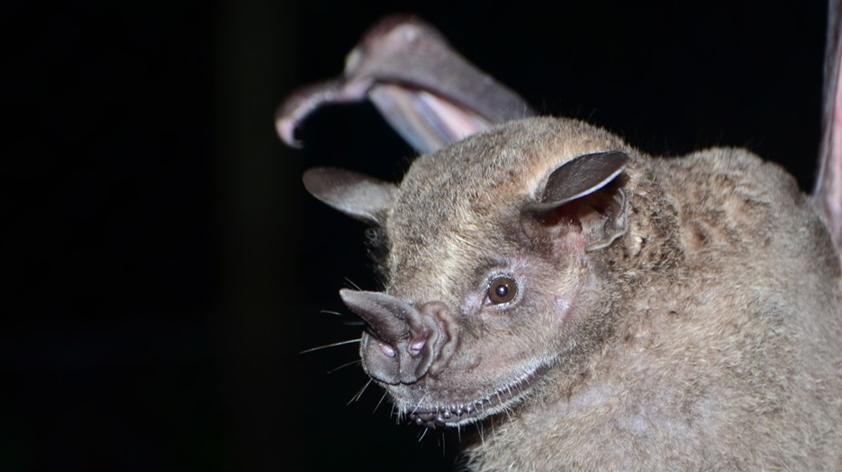
Architects of the night: Bats in neotropical forests (Part 1 – translated from Spanish)
Bats have recently been at the center of public interest given their apparent relationship with the SARS-CoV-2 virus and the health adversity in which today, as a society, we find ourselves. What many people do not know about bats is that these animals are victims of circumstances to which humans, and their activities, have led them.
However, there is nothing new in bats being negatively stigmatized by Western culture, strongly associated as they are with diseases like rabies and stories about evil beings that live in the night. Today, I will tell you a little about how fascinating bats are and how, in contrast to what is usually believed, they are actually very important for us and for the ecosystems which they inhabit.
Bats belong to a special group of mammals, properly named Chiroptera, which in Latin means “hands with wings”, because these animals have their forelimbs modified as wings that allow them to fly. They are the only mammals with the ability to truly fly, unlike flying squirrels that glide. Fossil records indicate that they already existed in the Eocene, about 55 million years ago, and being such an ancient group, they have diversified into different species, around 1400 around the world, inhabiting almost every ecosystem in the planet, with the exception of the Antarctic, the Arctic circle, and extremely high regions such as the Himalayas.
To survive, they learned to feed on almost every food resource available, including insects, nectar, fruits, blood, fishes, and other vertebrates. All these adaptations make bats key species in their ecosystems, as they interact on multiple levels in the trophic chain, which has led to the development of a variety of biological relationships between bats and many other species.
Their role in tropical forests and benefits to humans
Tropical forests, like those of Manu National Park in southeastern Peru, undergo an interesting process of development, as they are a clear example of an ecological concept widely referred to in academic circles, but rarely evident to most people, known as 'ecosystem succession'. The distribution of a certain composition of trees and plants obeys a development pattern in which the forests become more and more complex over time.
This process begins on riverbanks and beaches with the sprouting of seeds carried by the current or by the wind, followed by low-growing plants and shrubs that are dispersed by vertebrates. Complexity of the plant community becomes much greater as we move away from the banks, since the enormous diversity of animals that exist in this environment allows the development of more complex interactions.
Bats play a key role in this whole process and its maintenance. They, along with birds, disperse many of the pioneer plant species, those that initiate the process of forest development, thus contributing to the very beginning of the succession process. But their role does not end there, because insectivorous bats, which are in the majority, feed for many hours at night on insects that surround these emerging plants, significantly reducing the level of herbivory that they are subjected to, and ensuring, to a certain extent, their permanence and growth.
Later, as forests mature and are colonized by larger tree species—those usually dispersed by larger mammals—bats play the role of hunters, regulating species of small birds, amphibians, fish, and even other small mammals. They also fall prey to other vertebrates such as birds, snakes and even spiders. All such networks of interactions form an important part of the flows of matter and energy that sustain these successional forests, mainly because bats are highly interrelated with their entire surroundings, which makes them key species for the continuity of the development process of these environments.
But, from a human point of view, it is how bats benefit us that is of particular interest to us and our societies. This is where their role in 'ecosystem services' comes into play. Bats participate in three fundamental activities important for humans.
The first is flower pollination: like bees, bats that feed on nectar visit flowers and transport pollen from one to another, thus enabling their reproduction and allowing genetic flow between plants. An important product of this process, for example, is tequila, since bats are responsible for the pollination of agave (the plant from which this drink is extracted).
The second is seed dispersion: when our extractive activities end up degrading forest environments, bats are responsible for carrying the seeds of trees to these impacted areas, thus contributing to their resilience. In South American forests, where more and more wooded areas are being degraded, these animals are our best allies in the recovery process.
The third is pest control: in extensive agricultural areas, a frequent problem is pests of certain insects, and this is where bats intervene because they are almost insatiable and eat huge quantities of insects, thereby reducing their populations. Some studies estimate that a Brazilian free-tailed bat (Tadarida brasiliensis) may eat around 3,000 mosquitoes per night, and, in the United States, it is estimated that around 23 billion dollars are saved in pesticides thanks to this service provided by bats.
Orlando Zegarra is a Peruvian biologist, with an orientation in Ecology, from the National Agrarian University La Molina, in Lima. He is an alumnus of the Cocha Cashu Tropical Ecology and Field Techniques course in 2016, as well as a researcher in the mammalogy department of the San Marcos University Natural History Museum and a member of the mammalogy division of the Ornithology and Biodiversity Center (CORBIDI). He is also Coordinator of the Lima headquarters of the Peruvian Bat Conservation Program (PCMP) and a member of the IUCN Small Mammals Specialist Group (SMSG). Currently he's researching the distributions and morphological variations of bats in different environments.













